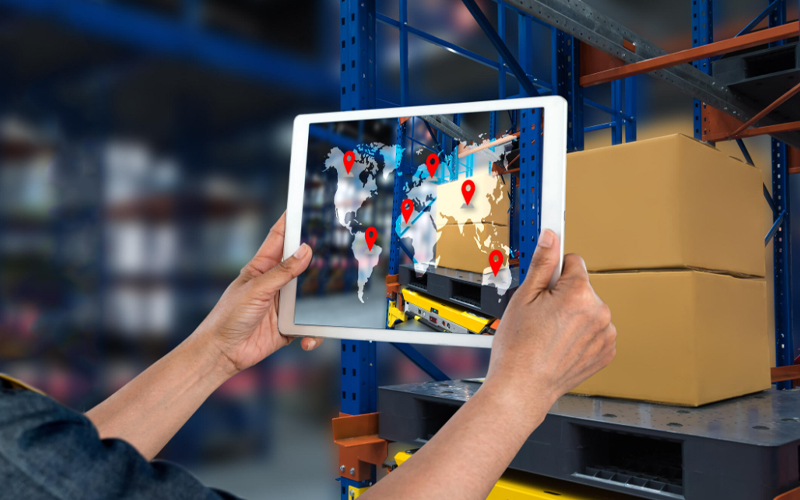From geopolitical instability and raw material shortages to sustainability concerns and natural disasters, constant and unpredictable disruptions have become an inevitable part of global supply chains. These challenges demand new levels of preparedness and agility for businesses to maintain their logistics efficiency. To stay competitive, businesses today must prioritise end to end logistics visibility, ensuring operations remain efficient, transparent, and responsive.
A recent study has revealed that the global connected logistics market is set to grow from $41.9 billion in 2024 to $124.3 billion in 2030 at a CAGR of 19.8%. This explosive growth reflects the growing trend of integrating advanced technologies such as AI, IoT, and big data, into logistics operations to enable real-time tracking, data-driven decision-making, and automation across various stages of the supply chain. It also reflects the rising demand for end-to-end visibility and the growing adoption of supply chain visibility tools.
Understanding end to end logistics visibility
End to end logistics visibility refers to the real-time tracking, monitoring, and coordination of every movement within the supply chain. It provides a unified view of assets, shipments, and operational nodes across the entire journey – from origin to final delivery.
At its core, end to-end logistics visibility relies on three key components:
- Shipping modes: Accessing real-time updates across air, road, rail, and sea transport.
- Nodes in the supply chain: Monitoring warehouses, distribution centres, cross-docks, and ports.
- Transfer points: Tracking handovers between carriers, customs, and freight forwarders.
This visibility allows organisations to identify inefficiencies, mitigate risks, and respond swiftly to any potential disruptions.
Supply chain visibility tools to revamp logistics efficiency
Achieving efficiency in logistics operations requires precision, adaptability, and agility. Supply chain visibility tools deliver timely insights, predictive alerts, and operational control critical for continuity and resilience in today’s dynamic global markets.
The key ways supply chain visibility and collaboration platforms are transforming logistics efficiency include:
Reducing delays and optimising routes
Real-time data from supply chain visibility tools helps logistics teams pre-empt bottlenecks and reroute shipments. By analysing traffic patterns, port congestion, and weather events, businesses can avoid costly disruptions and ensure on-time delivery.
Enhancing resilience and risk management
Supply chain visibility and collaboration platforms improve incident response and strengthen risk mitigation strategies. Automated alerts on delays, temperature breaches, or theft risks enables faster recovery and minimises loss.
Strengthening customer trust and retention
Customers today expect transparency. By providing shipment tracking and delivery updates, companies enhance trust and boost customer satisfaction. This visibility creates lasting loyalty and improves service ratings.
Supporting sustainable logistics
Optimised routes and fewer delays translate to lower emissions. Supply chain visibility tools also help track sustainability metrics, such as carbon footprints and empty miles, supporting ESG goals and sustainable operations.
Role of supply chain visibility and collaboration platforms in overcoming challenges
Despite the growing importance of end to end logistics visibility, organisations continue to face several hurdles that limit operational transparency. These issues range from fragmented systems to poor data management, often slowing down decision-making and reducing agility. Businesses often struggle with several critical challenges, such as:
- System integration challenges: Integrating legacy infrastructure with modern visibility platforms often involves complex technical adjustments and workflow redesigns.
- Data security concerns: Ensuring data security and privacy, especially when it comes to sensitive logistics information, across interconnected systems is a top priority in the face of increasing cyber threats.
- Resistance to change: Change management remains a hurdle, as employees and stakeholders may resist shifting away from familiar processes and tools.
- Overwhelming data volumes: Interpreting vast streams of data in real time can overwhelm existing systems and teams, reducing the value of insights.
- Siloed systems and poor interoperability: Inconsistent data formats and isolated platforms prevent seamless integration and information sharing across the supply chain.
- Lack of real-time visibility: Delayed or incomplete data can lead to reactive decisions, missed opportunities, and slower issue resolution.
Supply chain visibility and collaboration platforms play a crucial role in addressing these challenges. Whether cloud-based, on-premises, or hybrid, these platforms enable seamless integration and data sharing, leveraging emerging technologies to provide comprehensive, real-time insights.
AI and machine learning for predictive logistics
These technologies help monitor supply chain movements, process complex datasets to predict potential disruptions, detect anomalies, and automate responses rapidly and accurately. This enhances foresight, reduces manual intervention, and improves decision-making speed.
IoT and blockchain for trusted data flow
IoT devices enable real-time data collection from assets and shipments across the supply chain. On the other hand, blockchain ensures transparency, immutability, and trust in data exchange.
These technologies collectively empower organisations to gain true visibility while fostering collaboration across the ecosystem.
Infosys BPM offers deep domain expertise and tailored logistics business process outsourcing solutions to help organisations achieve comprehensive end-to-end logistics visibility. By combining industry knowledge with next-gen platforms, Infosys BPM enables businesses to adopt scalable supply chain visibility and collaboration platforms and unlock new efficiencies and tangible business outcomes.
Conclusion
To stay competitive, businesses must adapt to the growing complexity of global supply chains. Supply chain visibility tools empower teams to improve efficiency, build resilience, and enhance customer satisfaction – transforming end-to-end logistics from a cost centre into a strategic advantage. By adopting the right supply chain visibility and collaboration platform, organisations can take control of their operations and respond faster to market shifts.








